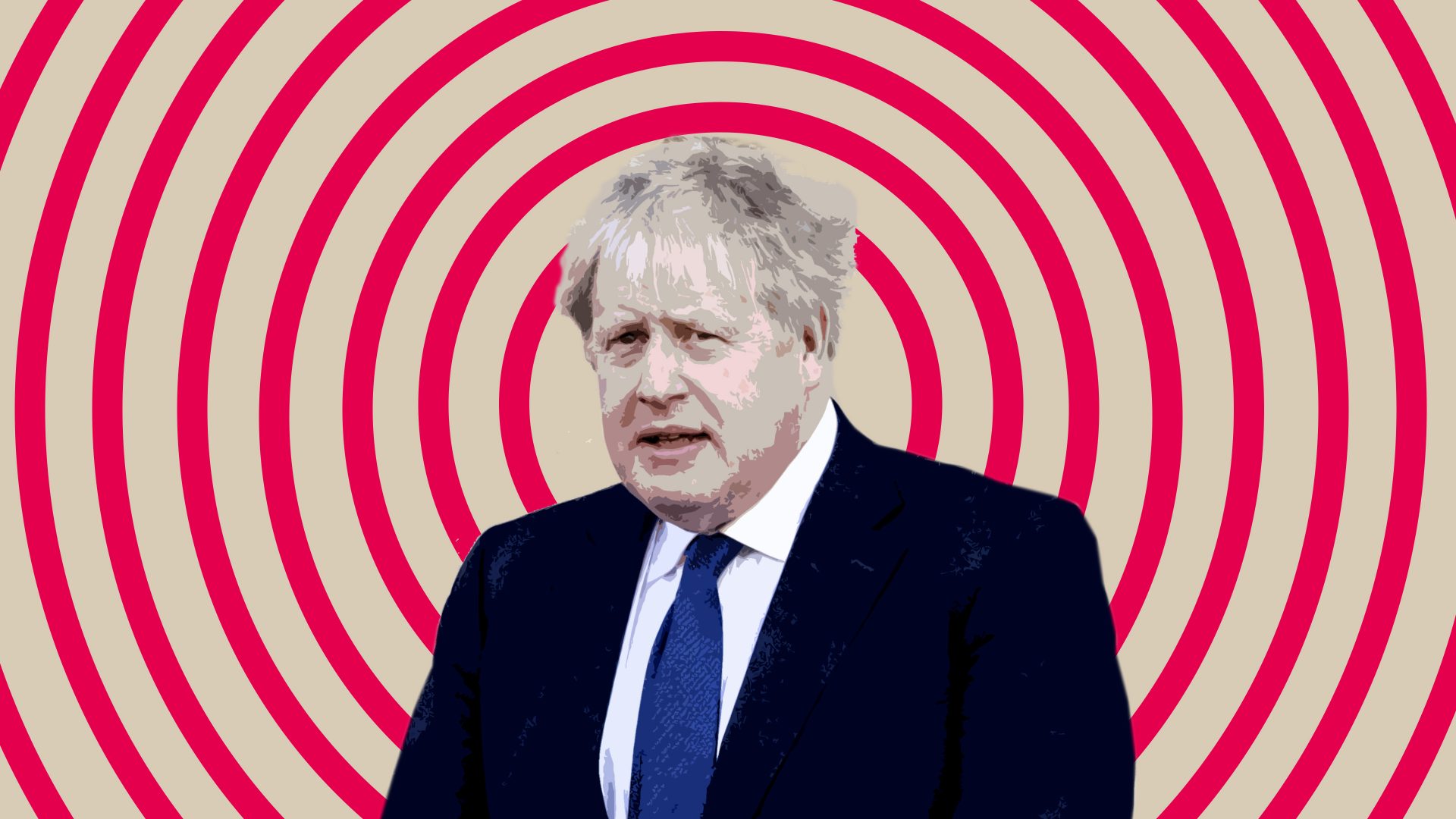First came the illness, then came the inquiries – lots of them. Two parliamentary select committees banded together last year to figure out the lessons, so far, of the pandemic. Sue Gray followed with her interim report into No 10’s oven-baked misdemeanours. Eventually, of course, the coppers were compelled to pull out their notebooks and make inquiries of a legal sort.
But now – if we put aside the, let’s say, not trivial finding that the two most senior politicians in the UK broke their own laws and misled MPs about it – we’re on the verge of the most significant inquiry of them all: the independent public inquiry into the country’s experience of the Covid crisis.
You might have forgotten about this one, amid all the others, so here’s what’s going on. In charge of proceedings is Baroness Hallett, a crossbench peer and former high-up at the court of appeal who, despite being appointed to this new role by Boris Johnson, is unlikely to be a pushover. She has spent the past few weeks consulting on the inquiry’s terms of reference – which is to say, what it will actually look into – and is about to present her recommendations to Johnson. He will get the chance to alter those terms before the start of the inquiry proper.
In case the prime minister reduces the terms to just one question (1. On a scale of Dunkirk to D-Day, just how Churchillian was Alexander Boris de Pfeffel Johnson during the pandemic?), I asked a number of civil servants, health experts and other informed types what they would like Baroness Hallett to inquire about.
Their responses were varied and detailed enough to fill several medical journals, but I’ve taken the gross liberty of summarising them under 10 headings.
1. How prepared was – and is – the UK?
Because inquiries have already taken place in the two years since Covid intruded on our lives, a number of conclusions have already been reached. One of these is that the UK’s pandemic preparedness before 2020, vaunted as world-beating by no less an authority than the Johns Hopkins Global Health Security Index, was actually too focused on flu-like occurrences – and not the (asymptomatic) spread of a surprise infectious disease.
And so, corrections have been made. For example, the UK National Risk Register’s calculations around the potential effects of a new infectious strain – which in 2017 added up to “several thousand people experiencing symptoms, potentially leading to up to 100 fatalities” – were updated in 2020 to “hundreds of thousands of deaths across the UK”.
But there are other forms of preparedness that have received rather less thought; such as the general readiness of the NHS to withstand any form of shock, let alone a pandemic. Over the past few decades, the health service has had to do more and more for less and less. So, on the one rubber-gloved hand, we have an ageing population. On the other, a 53% decline in the number of hospital beds in England over three decades, from just under 300,000 in 1987-88 to around 140,000 at the start of the pandemic.
It’s true, some of this is explained by improved treatments and greater efficiencies. But much of it is down to simple underinvestment, leading to long waiting times and cancelled cancer ops. Can that be allowed to continue after Covid, or even during it?
2. How do we compare with other countries?
We’ve all grown used to those grim league tables putting Country X above Country Y for the number of excess deaths caused by Covid. We’ve also grown used to the equally grim back-and-forth on social media: “Well, actually, I think you’ll find that if you take the per capita numbers…”
Nevertheless, Baroness Hallett shouldn’t shy away from getting involved. There is value in having the official public inquiry make a judgment on the performance of the UK compared with other countries, even if we know how it will probably shake out: a disastrous early underperformer that ended up somewhat better than, say, Spain and Italy but somewhat worse than, say, Germany and France.
However, there’s a more interesting line of comparative thinking for the inquiry to follow. As one of my sources put it: “How do we compare geographically… sociologically?” What he’s getting at are all the factors, from air routes to economic clusters, from demographics to beliefs, that distinguish the UK from other countries – and that may have helped (or hindered) the spread of the virus.
This sort of research, ideally done in conjunction with other countries to help create both national and international protocols, would be invaluable for combating any future pandemics.
3. Who made what decisions and why?
It used to be “follow the science” but, in the beginning, even the science was uncertain and often wrong. The initial decision to pursue a “herd immunity” strategy (by which Covid would in effect have been allowed to spread, in the hope that this would confer widespread immunity) was made with the agreement of official scientists and with little heed paid to what was happening, both good and bad, in countries such as Taiwan and Italy. It was only when more thorough data emerged, suggesting just how deadly the virus would be if given free rein, that the government moved towards implementing a lockdown.
Good practice might then have reigned for a brief time, but it was only a brief time. Johnson left intensive care after his own bout of Covid with, perversely, a new determination to put the economy ahead of epidemiology. The second lockdown, in November 2020, was only implemented after yet another data-bomb (which, not helping matters, contained some out-of-date forecasting). We’ve since had Plan Bs and Cs, tiers and roadmaps, as following the science has devolved into chasing a damn goose.
The sense that decision-making in No 10 was (and is) a total mess was bolstered by the testimonies given to parliament’s Health & Social Care and Science & Technology select committees last year. But more detail would be useful. Was there, for example, modelling showing what the chancellor’s Eat Out to Help Out scheme could mean for infection rates in the summer of 2020? And was that modelling heeded?
If she asks such questions, Baroness Hallett will no doubt embarrass a number of ministers and officials, but her true aim should be to identify structural problems that would outlast a change of personnel. After all, Johnson is bad enough. Entrenched Johnsonism – terrible decision-making hardwired into the circuit boards of British politics – might be even worse.
4. What happened in care homes?
Baroness Hallett has made it clear that the public inquiry is about learning lessons for the future, rather than finding people to blame for what has already happened. Besides, as per the Inquiries Act of 2005, “an inquiry panel is not to rule on, and has no power to determine, any person’s civil or criminal liability”.
But this doesn’t mean that a public inquiry is toothless. The same act goes on to say that “an inquiry panel is not to be inhibited in the discharge of its functions by any likelihood of liability being inferred from facts that it determines or recommendations that it makes”.
So, where to bite – and hopefully draw blood? Care homes. There were well over 20,000 excess deaths in care homes in England and Wales in just the first wave of the pandemic; a reflection of the great vulnerability of older people, yes, but also of scandalous mismanagement from both politicians and private companies. An absence of guidance, protective equipment and adequate testing meant that staff took the disease into homes, where it thrived mercilessly.
One thing that public inquiries can achieve is to counteract the furious pace of a 24-hour news cycle, and make us remember what shouldn’t ever be forgotten. “So much has happened since that we don’t make enough of what happened back then,” says another of my sources. “The handling of care homes ought to be one of the biggest public scandals we’ve ever seen.”`
5. How uneven were the effects?
Omicron is more than twice as likely to kill British-Bangladeshi and Pakistani people as it is white British. At the end of last year, only a third of Black Caribbean adults had been given their third vaccine shot, compared with two-thirds of the general population. Young women faced the worst of the second pandemic that was declining mental health.
We know all this because statisticians have done the important work of discovering all this. But Baroness Hallett can still roam further – into more areas of inequality, as well as their underlying causes. How much was due to the nature of the virus itself? How much were socioeconomic factors to blame? What about education, faith, online access? Even small, but potentially important, local differences such as ventilation in public buildings?
This is not cataloguing for cataloguing’s sake. The inequalities of the past two years reflect wider, longstanding inequalities in healthcare that need to be properly understood if we’re to have a health service for everyone.
6. Were the comms up to scratch?
I know, it’s easy to be sneery about communication strategies. Easy, but wrong. The government’s messaging – from “Stay Home. Protect the NHS. Save Lives” to “Hands. Face. Space” – was designed to express some very important rules and principles. Rules and principles that saved lives.
Getting these messages right is crucial for both the ongoing pandemic and others in future. But what is right? It’s often hard to be scientific about slogans. Presumably, the agencies who have worked alongside No 10 over the past two years (Topham Guerin and MullenLowe in the case of the two slogans above) did testing and focus-grouping before they pressed go. Do they have any insights to offer? What about the messages that weren’t used? Which delivery mechanisms, from billboards to YouTube, are particularly effective? Baroness Hallett shouldn’t neglect questions such as these.
And let’s not forget that, in a situation like this (and many others, it has to be said), policy, too, is comms. As an exasperated scientist said to me: “What message did Eat Out to Help Out convey? What message did people take from all the on-again, off-again travel bans?”
7. Did cosy contracts do harm?
Here, I’ll just transcribe from my dictaphone:
“We know what excuse ministers are giving for all the dodgy PPE contracts: that they were just reaching for the closest possible levers because the situation was so urgent, so we ought to be grateful that their families, friends and financial backers got so rich. But why not put that to the test? Discover whether these deals were actually good, necessary ones, or whether they failed the British public when there may have been better alternatives?
“You might not be able to draw a direct line from one particular contract to a bunch of deaths. But you can certainly check on its overall effectiveness – and draw conclusions. If it did work well, great. If it didn’t, and better was available, then here’s hoping that ministers will never be able to act in the same way in future.”
8. Why did the Vaccine Taskforce have to be set up off-grid?
The UK’s vaccination programme was, while not perfect, one of the great accomplishments of pandemic policy – anywhere in the world. However, the story behind the creation of the Vaccine Taskforce, the governmental(ish) body that looks to drive forward vaccine development and supply, is still worth looking into.
It was told by Dominic Cummings in some of the most extraordinary parts of his all-over extraordinary testimony to the two parliamentary committees last year. He recalls a text message from Patrick Vallance, the government’s chief scientific adviser, which read: “I want to set up a vaccine taskforce and do it outside the Department of Health and Social Care.” And so, that’s more or less what happened. The taskforce was established under a single person, Kate Bingham, who could hire and fire whom she wanted, just as she could be fired herself. This relatively small band set to work.
There are many reasons, on Cummings’ account, for doing it like this – one of which was, understandably, to keep Matt Hancock, then the health secretary, out of as many major decisions as possible. And there are also many reasons, on other people’s accounts, for not replicating this approach across Whitehall – sometimes, due process is important.
But however you look at it, the implications are hugely concerning. Just what does it say about the Department of Health that, seemingly on the recommendation of the chief scientific adviser, it was moved to the margins of the vaccination effort? Just how big are the dysfunctions and where do they lie?
And it is, potentially, part of a larger story about the DoH. More than one person I spoke to suggested that the pandemic exposed problems that were there already, such as a disconnection between the department, the top of the NHS, and local health services.
9. Can any successes be replicated elsewhere?
The UK has had something of a crash course in crisis management over the past two years – and should now have some transferable skills. Imagine, for instance, that something were to happen to disrupt supply chains again. Actually, no need to imagine: Brexit and Russia’s invasion of Ukraine are already causing plenty of disruption. The difference, this time, is that British organisations, people and, in theory, politicians will already have found new ways to be resilient. It should be a priority of public policy to encourage that resilience wherever it can be found.
But there are also successes, both big and small, that might be replicated outside of crisis situations. “One of the great advancements of the pandemic so far,” says one scientist, “is in data-gathering and presentation. It’s pretty easy to find data on Covid. And most of it has been presented in an easy-to-understand way. Imagine if that could be brought to all other areas of government, starting with the areas where they’ve got the data but they’re just terrible at making it digestible.”
10. What happens next?
Covid is not done with us yet, not nearly. There were over 2 million new cases in the UK last month, with more than 4,000 deaths. The threat of new (and potentially more serious) variants persists, meaning that the threat of new restrictions does, too.
But even if Covid were to miraculously disappear tomorrow, that still wouldn’t be the end of it. According to the latest data from the Office for National Statistics, there are currently about 1.7 million people in the UK who are self-reporting with Long Covid – of whom more than 320,000 feel that their “ability to undertake their day-to-day activities” has been “limited a lot”. That second number, by the way, is about 1% of the entire workforce. This could be an economic catastrophe as much as a public health one.
Note that word: could. As one official explains, “We don’t really know how Long Covid will pan out. It…” – and here’s that word again – “…could fizzle out, or it could be one of the greatest long-term challenges facing the British state.” But she adds: “If there has been one lesson from the pandemic, surely it’s that we should prepare for the worst.”
So what preparations are being made to deal with Long Covid? And what effect is the government’s current policy – of Omicron for everyone, everywhere – having?
Of course, there are more areas of concern than those listed above. The closures of schools and universities, for example. The efficacy of the chancellor’s economic support measures.
But, at the same time, let’s not get carried away. Several years ago, the Institute for Government published a report analysing the (at that time) 68 public inquiries that had taken place since 1990 – and why so few of them had resulted in proper change. One of the problems they highlighted was the tendency for inquiries to broaden out and therefore take longer, cost more, and have thinner conclusions. High-precision and high-power is the way to go.
Because, in the end, this is the one Covid inquiry that can’t be wasted. The 170,000 people – no, more – who have died from the virus in the UK, as well as those they leave behind, deserve the finest of epitaphs. Baroness Hallett, the chisel and hammer are in your hands. The stone before you.
Peter Hoskin writes about politics and culture. He is the Daily Mail’s video games critic



